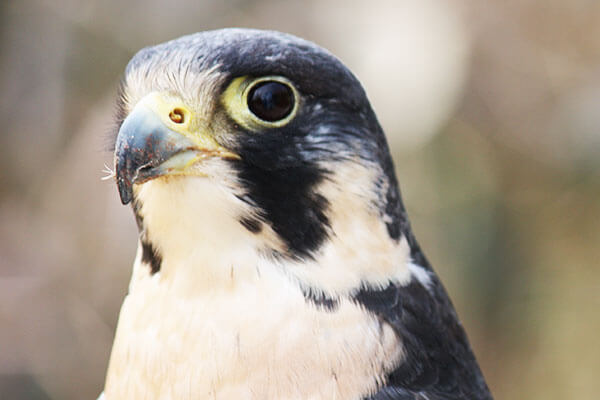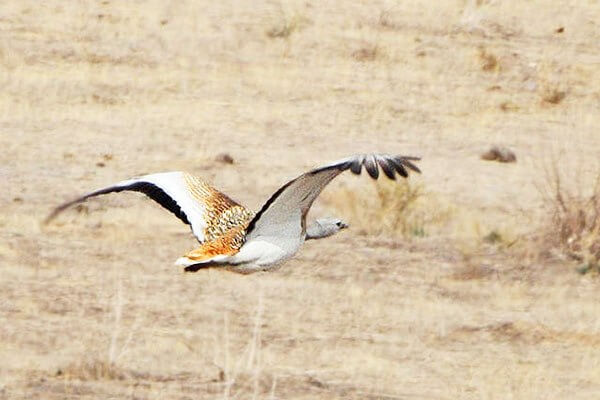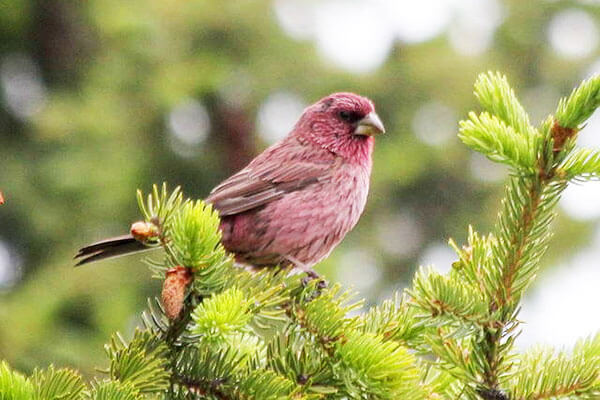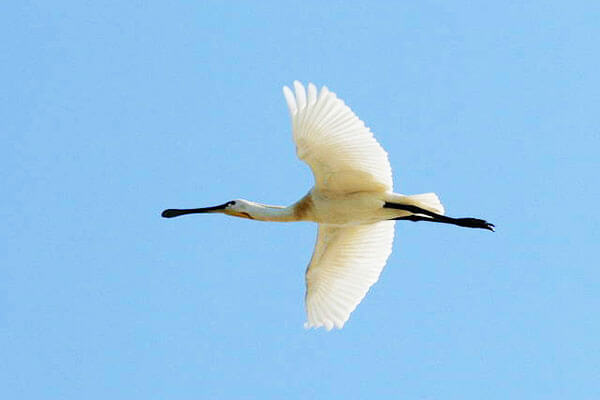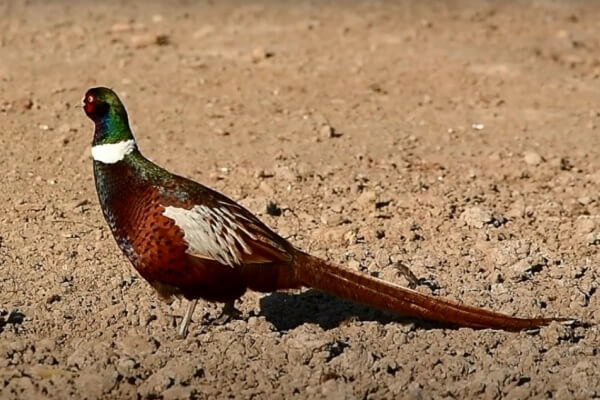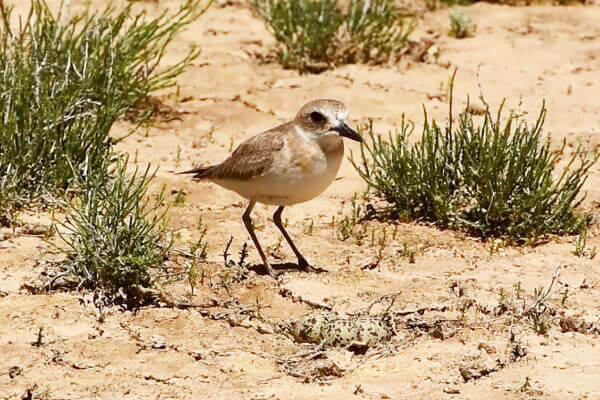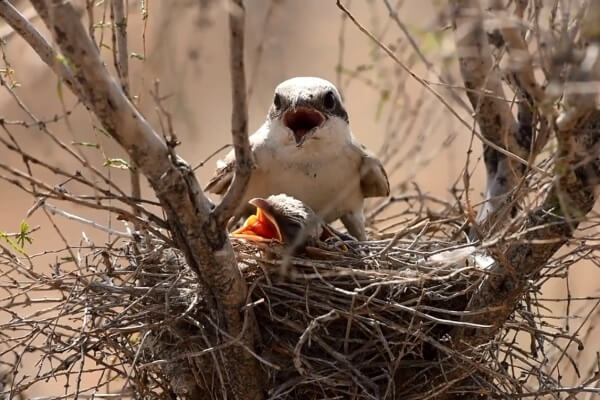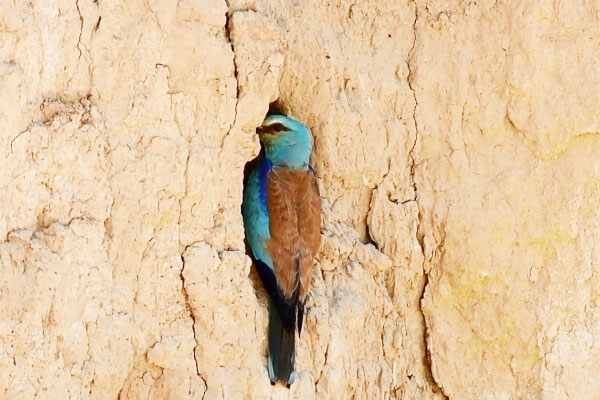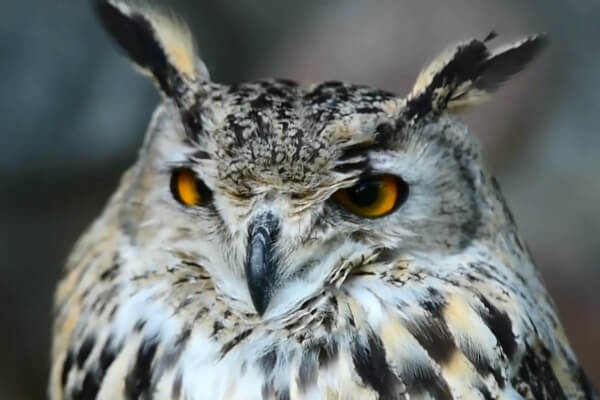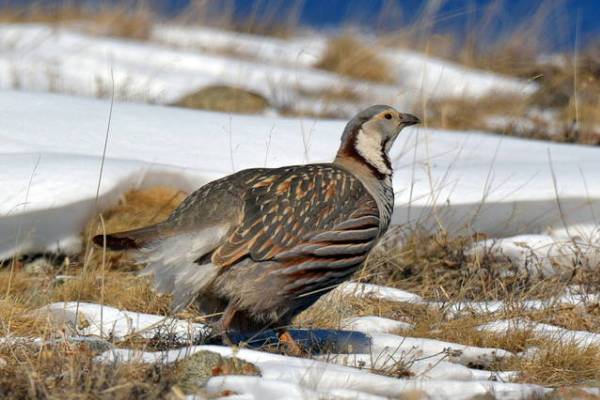There are about 300 species of birds in the Altyn-Emel National Park, 40 of them are rare (marked with an asterisk). 33 rare species are included in the Red Book of Kazakhstan, 19 - in the Red List of Threatened Species of the International Union for Conservation of Nature (IUCN).
In 2002, Kazakhstan launched the "Main Bird Areas of Kazakhstan" program, and the Altyn-Emel National Park became one of such areas.
There are some bird species here that meet the criteria of this program. First of all, these are globally endangered species (Red List of IUCN).
1. Dalmatian Pelican* - Pelecanus crispus
2. Ferruginous Duck* - Aythya nyroca
3. Pallas' Sea Eagle* - Haliaeetus leucoryphus
4. Pale Harrier* - Cyrcus macrourus
5. Lesser Kestrel* - Falco naumanni
6. Bustard* - Otis tarda
7. Black-tailed Godwit* - Limosa limosa
8. Stifftail* - Oxyura leucocephala
9. Red-footed Falcon* - Falco vespertinus
10. Sociable Lapwing* - Chettusia gregaria
11. Eastern Stock Dove* - Columba eversmanni
12. Imperial Eagle* - Aquila heliaca
13. Houbara Bustard* - Chlamydotis undulata macqueenii
14. Little Bustard* - Otis tetrax
15. Roller* - Coracias garrulus
16. Corn Crake* - Crex crex
17. Egyptian vulture* - Neophron percnopterus
18. Black Vulture* - Aegypius monachus
19. Saker Falcon* - Falco cherrug
The said ornithological program also includes the species belonging to the biome "Eurasian deserts and semi-deserts" (houbara bustard, greater sand plover, Pallas's sandgrouse, eastern stock dove, white-winged woodpecker, Syke's warbler, desert warbler, Turkestan tit, saxaul sparrow, desert finch, red-headed bunting) and the biome "Iran-Turanian Mountains" (large rock nuthatch, Stewart's bunting and gray-necked bunting). All these species are found in Altyn-Emel.
Two thirds of all bird species in the national park are nesting. Such a large number is caused by the landscape diversity - from wetlands, deserts and steppes to foothills and alpine meadows. That makes Altyn-Emel an attractive place for ornithologists and birdwatchers.
Abbreviations:
RBK - Red Book of Kazakhstan
IUCN - International Union for Conservation of Nature
The richest species composition of the avifauna is in the delta of the Ili River. For half a century after the filling of the Kapchagai reservoir, a complex of wetlands was formed here, ideal for nesting of many species of birds.
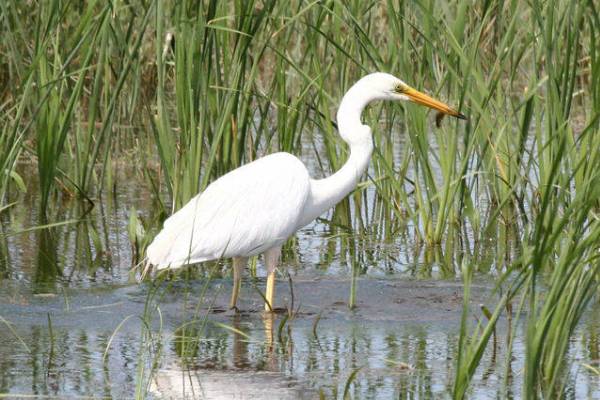
Great White Egret - Egretta alba. A common bird in the floodplain of the Ili River. Nests in reed areas.
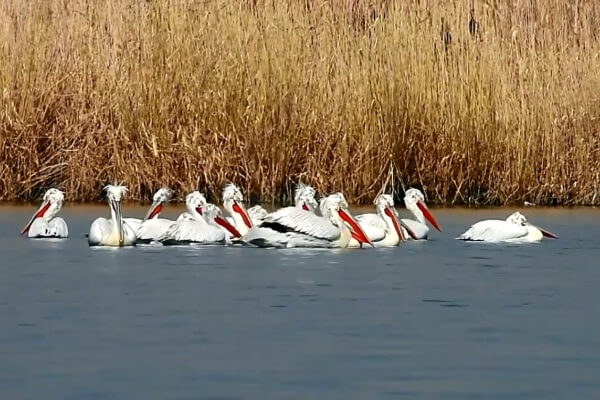
Dalmatian Pelican* - Pelecanus crispus. Included in the Red List of Threatened Species of the International Union for Conservation of Nature (IUCN). Like Great White Pelican* (Pelecanus onocrotalus), appears regularly in the delta of the Ili River in summer. Both species are listed in the Red Book of Kazakhstan.
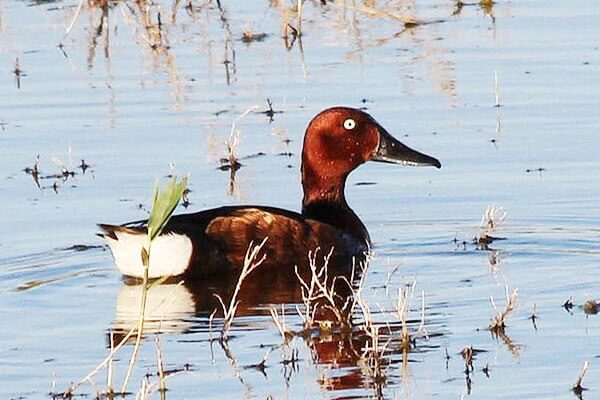
Ferruginous Duck* - Aythya nyroca. A rare nesting species of lakes in the Ili River delta. In recent decades, the number has been low.

Yellow-headed Wagtail - Motacilla citreola. It is observed in large numbers during the spring migration from March to May. Nests in small numbers in the meadows of the Ili River delta. The subspecies of birds are not entirely clear. Both Motacilla citreola citreola and Motacilla citreola werae are observed during migration. During nesting, there are birds with a transitional color between Motacilla citreola citreola and Motacilla citreola quassatrix.

Caspian Gull - Larus cachinnans. A common species of the Kapchagai reservoir coast, where it can be encountered all year round, since some of the birds remain for wintering. In the delta, it nests on sandy islands.
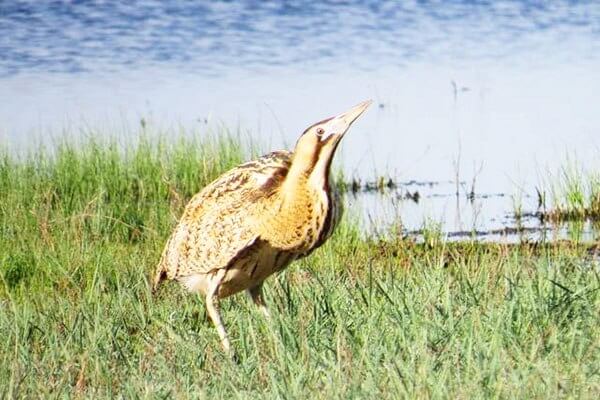
Eurasian Bittern - Botaurus stellaris. Nests in the reed floodplain meadows of the Ili River delta; in some years it winters.
|
1 |
Little Dabchick - Tachybaptus ruficollis capensis |
Migrant |
|
|
2 |
Black-necked Grebe - Podiceps nigricollis |
Nesting is rare |
|
|
3 |
Great-crested Grebe - Podiceps cristatus |
Nesting |
|
|
4 |
Great White Pelican* - Pelecanus onocrotalus |
Migrant |
RBK |
|
5 |
Dalmatian Pelican* - Pelecanus crispus |
Migrant |
RBK, IUCN |
|
6 |
Southern Cormorant - Phalacrocorax carbo sinensis |
Nesting |
|
|
7 |
Eurasian Bittern - Botaurus stellaris |
Nesting |
|
|
8 |
Little Bittern - Ixobrychus minutus |
Nesting |
|
|
9 |
Night Heron - Nycticorax nycticorax |
Migrant |
|
|
10 |
Great White Egret - Egretta alba |
Nesting |
|
|
11 |
Grey Heron - Ardea cinerea |
Nesting |
|
|
12 |
Greylag Goose - Anser anser |
Nesting is probable |
|
|
13 |
Shelduck - Tadorna tadorna |
Migrant |
|
|
14 |
Mallard Duck - Anas platyrhynchos |
Nesting |
|
|
15 |
Shoveler - Anas clypeata |
Nesting |
|
|
16 |
Rufous-crested Duck - Netta rufina |
Nesting |
|
|
17 |
Ferruginous Duck* - Aythya nyroca |
Nesting |
RBK, IUCN |
|
18 |
Marsh Harrier - Circus aeruginosus |
Nesting |
|
|
19 |
Gray Crane* - Grus grus |
Nesting |
RBK |
|
20 |
Water Rail - Rallus aquaticus |
Nesting |
|
|
21 |
Little Crake - Porzana parva |
Nesting is probable |
|
|
22 |
Marsh Crake - Porzana pusilla |
Nesting is probable |
|
|
23 |
Gallinule - Gallinula chloropus |
Nesting is probable |
|
|
24 |
Coot - Fulica atra |
Nesting, casual |
|
|
25 |
Kentish Plover - Charadrius alexandrinus |
Migrant |
|
|
26 |
Courser - Himantopus himantopus |
Nesting |
|
|
27 |
Avocet - Recurvirostra avosetta |
Migrant |
|
|
28 |
Oystercatcher - Haematopus ostralegus |
Migrant |
|
|
29 |
Sandpiper - Tringa ochropus |
Migrant |
|
|
30 |
Redshank - Tringa totanus |
Nesting |
|
|
31 |
Red-necked Phalarope - Phalaropus lobatus |
Migrant |
|
|
32 |
Collared Pratincole - Glareola pratinсola |
Migrant |
|
|
33 |
Black-headed Gull - Larus ridibundus |
Nesting |
|
|
34 |
Caspian Gull - Larus cachinnans |
Nesting |
|
|
35 |
Black Tern - Chlidonias niger |
Nesting |
|
|
36 |
Gull-billed Tern - Gelochelidon nilotica |
Nesting |
|
|
37 |
Little Tern - Sterna albifrons |
Migrant |
|
|
38 |
Common Tern - Sterna hirundo |
Nesting |
|
|
39 |
Common Cuckoo - Cuculus canorus |
Nesting |
|
|
40 |
Black-headed Wagtail - Motacilla feldegg |
Nesting |
|
|
41 |
Yellow-headed Wagtail - Motacilla citreola |
Nesting |
|
|
42 |
Cetti's Warbler - Cettia cetti |
Nesting |
|
|
43 |
Savi's Warbler - Locustella luscinioides |
Nesting is probable |
|
|
44 |
Paddyfield Warbler - Acrocephalus agricola |
Nesting |
|
|
45 |
Reed Warbler - Acrocephalus scirpaceus |
Migrant |
|
|
46 |
Great Reed Warbler - Acrocephalus arundinaceus |
Nesting |
|
|
47 |
Blue-throated Warbler - Luscinia svecica |
Nesting is probable |
|
|
48 |
Bearded Tit - Panurus biarmicus |
Nesting is probable |
|
|
49 |
Reed Bunting - Emberiza schoeniclus |
Nesting |
|
|
50 |
Great Black-headed Gull - Larus ichthyaetus |
Migrant |
|
|
51 |
Terek Sandpiper - Xenus cinereus |
Migrant |
|
|
52 |
Marsh Sandpiper - Tringa stagnatilis |
Migrant |
|
|
53 |
Pallas' Sea Eagle* - Haliaeetus leucoryphus |
Migrant |
RBK, IUCN |
|
54 |
Booted Eagle* - Hieraaetus pennatus |
Nesting is probable |
RBK |
|
55 |
Gadwall - Anas strepera |
Nesting |
|
|
56 |
Garganey Teal - Anas querquedula |
Nesting |
|
|
57 |
Common Pochard - Aythya ferina |
Nesting is probable |
|
|
58 |
Osprey* - Pandion haliaetus |
Nesting, before |
RBK |
|
59 |
Montagu's Harrier - Circus pygargus |
Nesting is probable |





